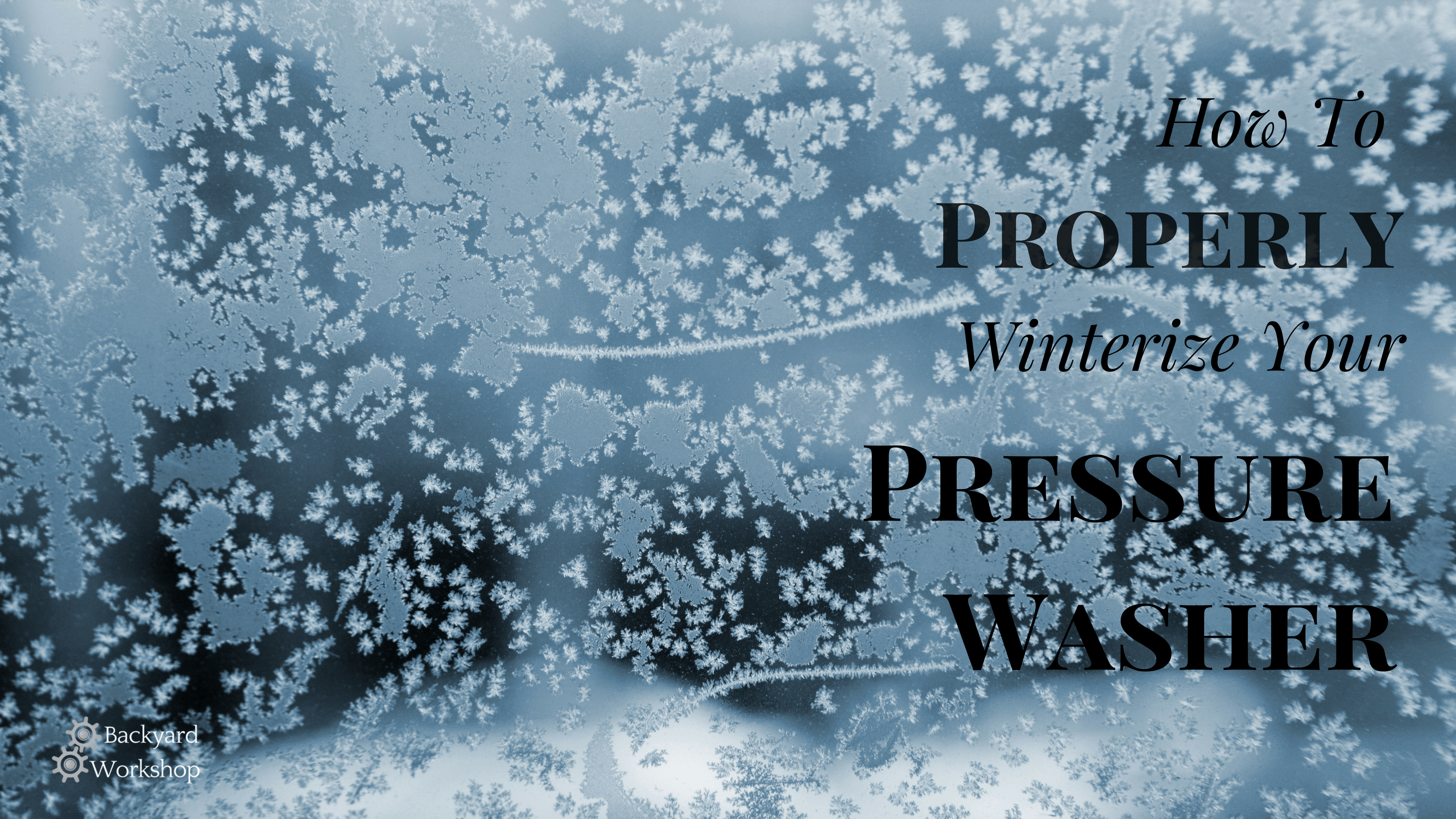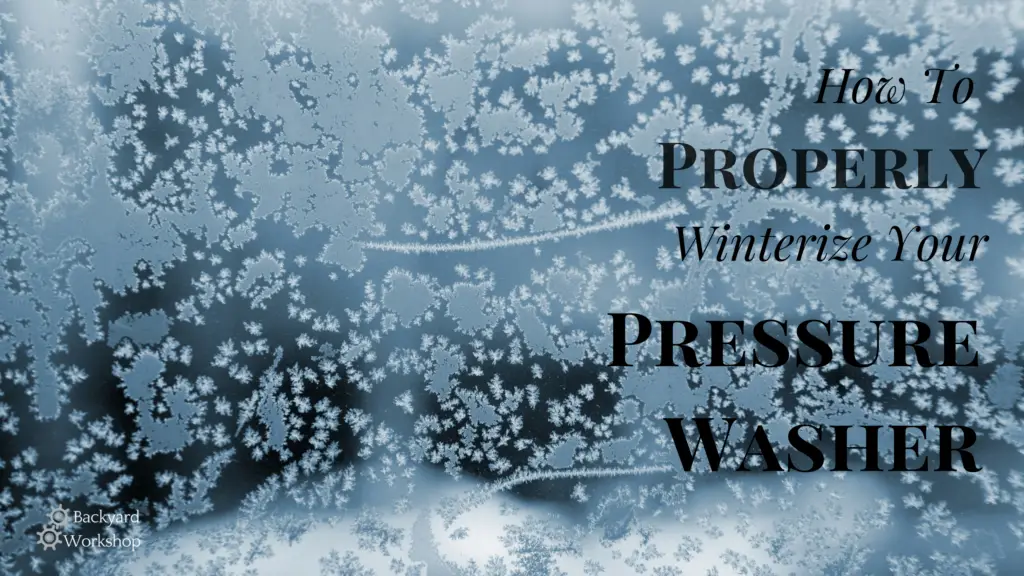How Do You Winterize Your Pressure Washer?


The chill of late autumn is in the air, and with it the promise of shorter days and colder nights. This also means it’s time to winterize our backyard tools, such as the power washer. This article will lay out the steps you need to take in order to properly winterize your gas or electric outdoor washer.
Why Do We Winterize A Power Washer?
The purpose of winterizing the pressure washer is to keep the parts inside lubricated when not in use. We want to remove all moisture so rusting or icing does not occur and damage the tool. In addition, ethanol fuels can wreck havoc on small engines over a winter, so removing fuels is a concern as well.
You need to take different steps depending on whether you have a gas or electric power washer.
Winterize Your Gas Pressure Washer
When gas pressure washers are expected to be idle for a month or more, it’s a good idea to take the time to winterize the device. It’s a must-do item if you are in a cold climate when freezing will occur. If you don’t winterize the washer, you will end up damaging the pump once temps fall below freezing.
There are 4 easy steps to follow to properly winterize your washer.
1.Winterize The Gas-Powered Engine
You can empty the fuel from the gas tank and carburetor or use a fuel stabilizer to protect the engine during the winter months. Go with draining if you are in an area that is subject to ethanol-blending on their gasoline.
Draining the fuel
Drain the fuel by clamping off the fuel line. Loosen the clamp on the fuel line with a pair of pliers. Then pull the fuel line away from the fuel pump or carburetor. Drain all the fuel into a container and re-attach the fuel line. Fasten the fuel clamp.
The way to drain the fuel from the carburetor bowl depends on the kind of carburetor. Some have a drain screw and others you need to remove the bowl to drain the fuel.
Use Fuel Stabilizer
Fuel stabilizers can protect your engine for about 6 months.
Read the manufacturer’s instructions for the amount of fuel stabilizer your gas pressure washer engine needs. Add the fuel stabilizer to the gas tank. Allow the stabilizer to circulate throughout the carburetor by running the engine for about 2 minutes.
Oil and Filters
To protect the cylinder from rust, add motor oil by removing the spark plug and adding the oil through the spark plug hole. A small amount of oil is enough. Pull the crank a few times to coat the cylinder. Replace the spark plug.
Check if there’s enough oil by checking the dipstick.
Check the air filter and clean it if necessary. Wash a foam filter with soap and warm water. Replace a paper filter if you can’t knock it clean.
Check the pressure of the tires on your power washer at this time as well.
2.Remove The Detergent
Connect the pressure washer to the water inlet. Instead of adding detergent, place the detergent tube in a bucket of clean water. Run the pressure washer for a few minutes to flush out the detergent. Turn off the faucet and the engine.
3.Flush Out The Water
Remove the hoses from the water pump. Drain the water from the high-pressure hose, the water inlet, the nozzle, and attachments. Dry the parts with a cloth before you store it.
Run the pressure washer again to remove all water from the water pump. Any water left behind can freeze and damage the parts of the pressure washer.
4.Add Anti-Freeze to the Pump
Wear eye protection as a safety precaution when adding anti-freeze to the water pump. Run the pressure washer so that the water pump sucks up the anti-freeze. Wait until the anti-freeze comes out at the washer outlet where the high-pressure hose was connected. The anti-freeze protects the water pump against the mineral deposits and damage caused from the cold.
Winterize Your Electric Pressure Washer
The electric motor doesn’t require any maintenance as a fuel tank does. The pressure pump system, however, needs to be winterized.
Here are three easy steps to follow when winterizing:
1.Flush Out Detergent
Add the detergent hose to a bucket of clean water. Attach the water inlet as if you were going to use the water pump. Turn on the faucet. Run the pressure washer for about a minute or until all detergent is flushed out of the pressure washer.
2.Drain The Water
After you’ve turned off the engine and the faucet, disconnect all hoses. Drain all the water from the hoses, nozzle, and attachments. Then turn on the pressure washer for a few seconds to remove any excess water in the water pump.
3.Anti-Freeze For The Water Pump
To protect the water pump seals against the cold and damage, add anti-freeze. Run the electric motor until the excess anti-freeze exits at the outlet.
For further protection against the cold store your pressure washer in the garage or a store room attached to your house. Detached garages and buildings may be too cold. Avoid cold areas that the temperature falls below 40 degrees F. Find a place that is warm and dry.
For protection against dust or other airborne contaminates, use a storage cover.

